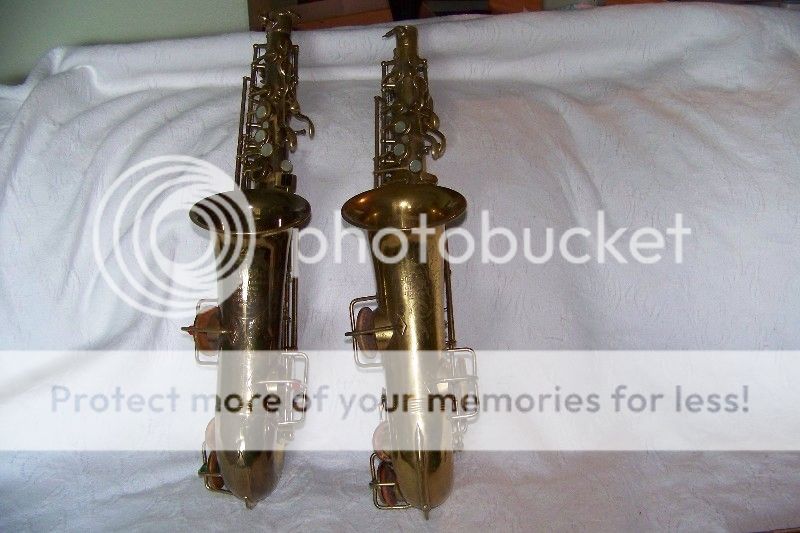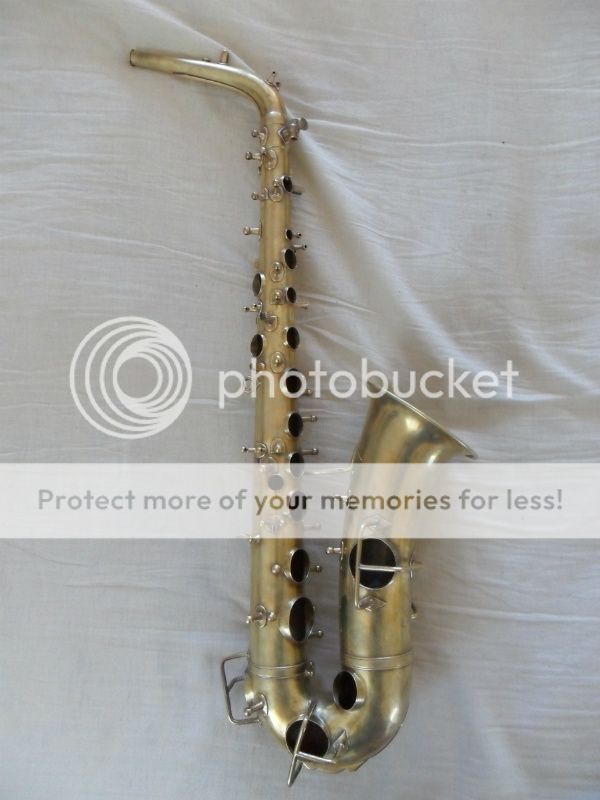Hey folks,
How are you?
Well, some of you may remember that I was looking forward to buy an old sax to practice overhauling and repairing.
So, I made a very good deal and now have two alto saxophones to start my project.
Both are stencils. One is "The Great Gretsch American" (some people say it´s made by Martin, Conn, Holton...I don´t know) and the other is a "Harwood Professional" (made by Buescher).
I believe both are from around 1920-1930.
Here are some pictures:


They look very similar, except that the Gretsch is heavier and it´s in worse conditions.
Anyway, I´ll start with the Harwood Professional. It´s in great conditions, really. I believe it will just need a major cleaning (complete disassembling/assembling), re-padding and regulation. The lacquer isn´t looking good and a lot of it is missing, maybe I´ll strip it off.
So, I here I am. I have these altos and I need help to start my project!
Where do I start? Do you have any tips? Really, any advice is highly welcomed. I can´t do it without your help!
I really hope that, by the end of this journey, I´ll have two really nice sweet sounding vintage saxophones.
If you have any PDF material, schematics or something that could help, you can send them to rafael-at-rafaelmorgan-dot-com.
Thanks so much in advance.
Cheers,
Raf.
How are you?
Well, some of you may remember that I was looking forward to buy an old sax to practice overhauling and repairing.
So, I made a very good deal and now have two alto saxophones to start my project.
Both are stencils. One is "The Great Gretsch American" (some people say it´s made by Martin, Conn, Holton...I don´t know) and the other is a "Harwood Professional" (made by Buescher).
I believe both are from around 1920-1930.
Here are some pictures:


They look very similar, except that the Gretsch is heavier and it´s in worse conditions.
Anyway, I´ll start with the Harwood Professional. It´s in great conditions, really. I believe it will just need a major cleaning (complete disassembling/assembling), re-padding and regulation. The lacquer isn´t looking good and a lot of it is missing, maybe I´ll strip it off.
So, I here I am. I have these altos and I need help to start my project!
Where do I start? Do you have any tips? Really, any advice is highly welcomed. I can´t do it without your help!
I really hope that, by the end of this journey, I´ll have two really nice sweet sounding vintage saxophones.
If you have any PDF material, schematics or something that could help, you can send them to rafael-at-rafaelmorgan-dot-com.
Thanks so much in advance.
Cheers,
Raf.




